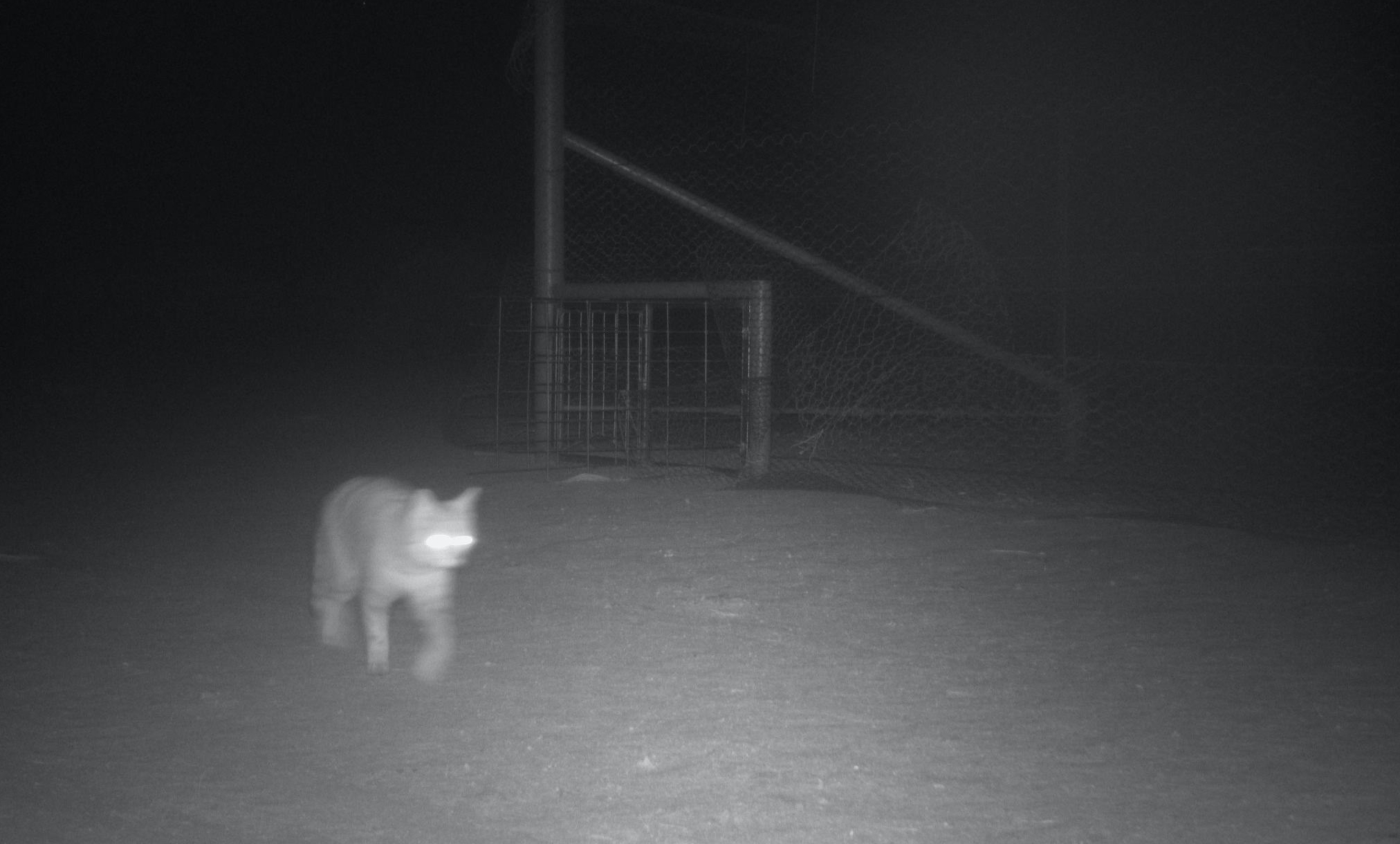
The Centre for Ecosystem Science and the Wild Deserts project welcomes the opportunity to provide advice to this important inquiry. We provide seven recommendations which we believe would increase the effectiveness of management of feral and domestic cats and reduce their damage, reflecting the current state of scientific knowledge.
Our team of scientists from Wild Deserts have been heavily involved in clearly documenting the impact of feral cats on native wildlife over the last 25 years, as evidenced by our research. Our research suggests feral cats are the most significant barrier to successful reintroductions of threatened species in the arid zone with numerous reintroduction projects failing due to predation by feral cats . Feral cats also kill in situ populations of threatened species such as rodents, dasyurids, birds and reptiles. We have found that even species up to several kilograms in body weight such as rock wallabies are killed by feral cats.
Our research has shown that individual cats can have disproportionate impacts on threatened species populations and can cause high mortality rates of threatened species. These cats are usually large, male and in good body condition ie expert hunters.
Domestic cats are also widespread and have disproportionate impacts on all biodiversity compared to native predators due to their much higher densities, These impacts of domestic cats are more severe than many owners appreciate because only a fraction of kills are seen by owners and prey that escape cat predation have among the highest mortality rates of injured wildlife.
Recommendations
Recommendation 1: There should be an adoption of more harmonised legislation and regulation which takes a risk-based approach in relation to trialling and improving new control methods. Once approved in one state, there should be approval in all states.
Recommendation 2: There should be legislation and regulation, with compliance, ensuring that pet cats are registered, desexed (unless registered breeders) and microchipped, and contained indoors or on the owner’s property at all times.
Recommendation 3: Tighter regulation and enforcement of laws preventing deliberate feeding of stray cats and inadvertent supplementation through unfenced dumps (council, industry, mining camps etc) are required to reduce high densities of cats contributing to predation and disease impacts.
Recommendation 4: There should be a national framework for the control, investment in new approaches and survey of domestic and feral cat populations, which can report on measures to improve outcomes in reducing biodiversity impacts of cats.
Recommendation 5: There should be increased investment in developing new cat control technologies with a focus on methods that will enable future co-existence between native wildlife and feral cats. Field trials of new technologies should have improved approval processes to facilitate faster trials and quicker uptake of new technologies.
Recommendation 6: Import controls should prohibit the import of any other large cat species, or variant large domestic cats or their hybrids, unless as exhibits for approved zoos or equivalents.
Recommendation 7: Domestic cats have significant impacts on native wildlife, particularly where urban or farm areas are near wildlife habitats. There should be improved education about the impacts of these domestic cats on wildlife and what the public can do to control the impacts of their pet cats.
See the full submission attached in PDF form below.
